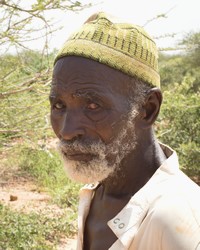The Zarma are often included in a larger cluster of people living in West Africa known as the Songhai. The Zarma and Songhai treat each other as cousins and frequently intermarry. They may have originated from Mali, emigrating southward centuries ago. They speak Zarma, a dialect of the Songhai from the Nilo-Saharan language family. Some of the Zarma live in the southwestern part of Niger, while others occupy northern Nigeria, along the Niger River Valley. The region the Zarma inhabit consists of sandstone plateaus, dome-shaped hills, and plains that flood easily during the rainy season. In this grassland region, freshwater swamps often give way to tropical rain forests.
The Zarma are known as honest and hard-working. Most are dryland farmers, with their staple crop being millet. Cowpeas, sorrel, and other nuts are also grown in large quantities. Guavas, mangoes, bananas, and citrus fruits are abundant on Zarma-owned farms. They also grow vegetables such as tomatoes, carrots, lettuce, okra, and potatoes on smaller plots or in gardens. Because each family works their own individual farm, they need many children. The head of the household assigns fields to each individual to grow crops. The Zarma also raise chickens and some cattle. The cattle are usually only slaughtered and eaten during religious ceremonies and festivals.
Some Zarma men travel south each year to distant towns where they trade along the coast of Guinea. In those towns, the word Zarma has become synonymous with "cloth trader. "The household is the basic social unit among the Zarma, because it combines consumption and production within itself. A typical village house is either round and has mud walls or is rectangular and has walls made of sun-dried mud bricks. The houses usually have straw thatched roofs. The oldest male is the head of the house. When a man has more than one wife, each wife has a separate dwelling for herself and her children. Zarma children are timid and they are expected to have a shameful expression when they are conversing with superiors; they tend to look down when called. By age six, children are expected to know the difference between right and wrong, and they begin to do light work in preparation for their future role as adults. Boys usually tend to the farm animals, while girls care for the younger children. They also pound millet and sell food in the villages. Basketry is the most notable art in their culture. Daum-palm leaves have many uses: women make colorful mats and covers from them, and men make ropes. Women also make pottery and woven blankets.
Although three-quarters of the Zarma profess to be Muslim, their Islamic beliefs have been intermingled with their traditional animistic beliefs (belief that non-human objects have spirits). The Islamic observances are led by marabouts (religious leaders who studied the Koran). The Zarma follow the usual Islamic practices of prayer, fasting and making sacrifices. However, they also take part in various cults, which involve spirit-possession, spirit worship, and magic. The cults are headed by priests who have been possessed by evil spirits. The Zarma believe these priests have healing powers. The Zarma believe that there are several different types of spirits: those that bring illness or death; ghosts or "cold" spirits; and those who control the forces of nature.
The Zarma, along with the other Songhai peoples, need the chance to respond to the gospel. They have few, if any, chances to hear that they must depend on Jesus Christ for abundant life and salvation.
Pray for workers to go to the Zarma people. Pray that the Zarma people, especially their elders and decision-makers, will be open to Christ's ambassadors and the gospel. Pray for a movement to Christ among the Zarma people that will bless them for decades.
Scripture Prayers for the Zarma in Nigeria.
http://www.zermateam.org/
https://en.wikipedia.org/wiki/Zarma_people
https://www.britannica.com/topic/Zarma
| Profile Source: Joshua Project |

























